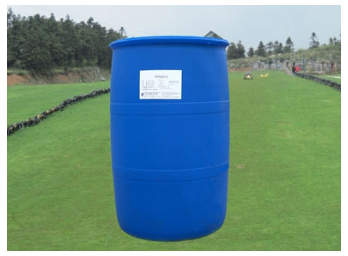Surfactant is added to the general pickling solution to obtain bright pickling solution, which can replace the traditional bright etching solution with high chromium, high nitrogen and serious pollution. The function of surfactant is to adsorb on the surface of workpiece and form a barrier adsorption film. Due to the shaking of the workpiece and the convection and diffusion of the solution, the adsorption film on the micro protruding part is easier to desorb than that on the concave part, and the corrosion and oxide scale on the protruding part are concentrated and dissolved by acid, and the dissolution rate is faster than that on the concave part. The reciprocating adsorption, desorption and dissolution also make the micro scratches on the surface of the workpiece be filled up to get a smooth and bright substrate surface. The surfactant has the function of leveling, brightening and corrosion inhibition.

In electroplating industry, pre-treatment of degreasing, pickling and polishing is needed before electroplating, painting and oxidation. In general, the alkaline degreasing liquid can achieve the ideal degreasing effect only when the temperature is high. If surfactant is added to the deoiling liquid, its emulsification and washing characteristics are used, that is, the amphiphilic groups of surfactant are adsorbed on the oil-water interface, the polar groups point to water, and the non-polar groups point to oil, and are arranged directionally to reduce the interfacial tension between oil and water, so that the oil on the metal surface is dispersed, suspended, separated from the workpiece surface and no longer adsorbed on the workpiece. Therefore, it can improve the oil removal effect and speed, and realize low temperature oil removal.
Surfactants are widely used in daily chemical industry and play an important role in metal protection industry. Surfactant can make metal protection effect better, save materials and energy, and solve a series of practical problems. At present, with the rapid development of surfactant industry at home and abroad, its application technology has become one of the hot spots in metal protection industry.
Surfactants, also known as surfactants, are organic compounds that can greatly reduce the interfacial tension at low concentrations. The hydrophobic groups, such as - Oh, - COOH and - SOH, are also found in these compounds.
According to the structure of surfactants, they can be divided into four types: anionic, cationic, nonionic and amphoteric. The asymmetric amphiphilic structure of surfactant molecules determines the basic properties of its interfacial adsorption, orientation and micelle formation in solution. As a result, the interfacial tension decreases and the system tends to be stable. It has the characteristics of wetting, emulsifying, washing, penetrating, solubilizing and foaming. It can be used as various functional additives in pickling, degreasing, electroplating, sealing, low temperature phosphating, corrosion inhibition and environmental protection. The mechanism of action is adsorption, but the effect is different with different conditions.